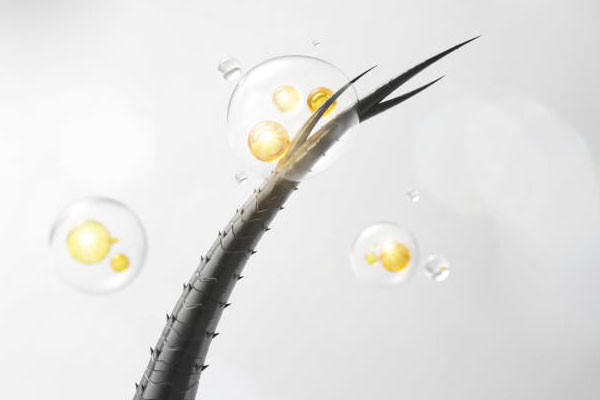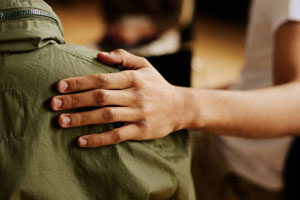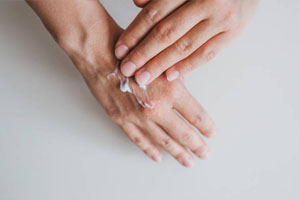Discover expert advice on preventing hair damage, understanding the causes and types of damage, and embracing the right hair care practices Learn how nutrition impacts hair health and find answers to frequently asked questions about maintaining strong and beautiful hair
Your hair is not just a part of your appearance; it's a reflection of your overall health and well-being. However, daily exposure to environmental stressors, styling routines, and chemical treatments can take a toll on your locks, leading to issues like hair damage and split ends. The good news is that there are effective ways to prevent and minimize these problems, ensuring that your hair remains healthy, vibrant, and free from damage. In this article, we'll explore the causes of hair damage and split ends, as well as provide a comprehensive guide on preventive measures, the right hair products to choose, and answers to frequently asked questions. Whether you're looking to maintain your current hair health or nurse damaged hair back to life, this article has you covered. Let's embark on a journey to discover how you can achieve and maintain luscious, damage-free locks.

Understanding Hair Damage and Split Ends
Causes of Hair Damage
Understanding the causes of hair damage is crucial to prevent and address this common hair issue:
- Heat Styling: Excessive use of hairdryers, straighteners, and curling irons can strip moisture from the hair, leading to damage.
- Chemical Treatments: Hair coloring, perms, and chemical straightening can weaken hair and make it more susceptible to damage.
- Poor Hair Care Habits: Frequent brushing, using harsh hair ties, and rough towel-drying can cause mechanical damage to the hair shaft.
- Environmental Factors: Exposure to sun, wind, and pollution can lead to dryness and damage.
- Poor Nutrition: Inadequate intake of essential nutrients like proteins, vitamins, and minerals can affect hair health.
Identifying the causes of hair damage is the first step in preventing it and maintaining healthy hair.
What Are Split Ends?
Split ends, scientifically known as trichoptilosis, are a common hair condition characterized by the splitting or fraying of the hair shaft's end. These splits can travel up the hair shaft if left untreated, causing further damage. Split ends make the hair look frizzy and unkempt, and they can result from various factors, including:
- Excessive Heat: Frequent use of hot styling tools can weaken the hair and cause it to split at the ends.
- Chemical Damage: Chemical treatments like bleaching and coloring can weaken the hair's structure, leading to split ends.
- Mechanical Damage: Rough brushing, using fine-toothed combs, and tying hair tightly can cause splits.
- Environmental Factors: Exposure to UV rays, wind, and dry air can contribute to split ends.
- Poor Nutrition: A lack of essential nutrients can make the hair more prone to splitting.
Understanding what split ends are and their causes is essential for taking effective preventive measures and addressing this common hair issue.
Preventive Measures
Proper Hair Care Routine
Adopting a proper hair care routine is essential for preventing hair damage and split ends. Here are some key elements of an effective routine:
- Gentle Washing: Use a mild, sulfate-free shampoo and conditioner. Avoid overwashing, as it can strip your hair of its natural oils.
- Proper Drying: Pat your hair with a soft towel to remove excess moisture. Avoid vigorous rubbing, which can lead to hair breakage.
- Regular Trimming: Get your hair trimmed every 6-8 weeks to remove split ends and maintain healthy hair.
- Use of Heat Protectants: Before using heat styling tools, apply a heat protectant spray to shield your hair from damage.
- Protective Styles: Opt for hairstyles that minimize tension and friction on your hair, such as loose braids or buns.
A well-structured hair care routine is the foundation for preventing damage and maintaining hair health.
Nutrition and Diet
Nutrition plays a significant role in the health of your hair. A balanced diet with the right nutrients can help prevent damage and split ends:
- Protein: Include lean meats, fish, eggs, and plant-based sources of protein like beans and nuts to support hair structure.
- Vitamins and Minerals: Consume foods rich in vitamins A, C, E, and minerals like zinc and biotin to promote hair health.
- Hydration: Drink plenty of water to keep your hair and scalp hydrated, preventing dryness and breakage.
- Omega-3 Fatty Acids: Incorporate foods like fatty fish, flaxseeds, and walnuts for their omega-3 content, which nourishes hair follicles.
- Avoid Excess Sugar and Processed Foods: High sugar and processed food intake can contribute to hair damage. Choose whole, nutrient-rich foods instead.
A well-rounded diet ensures your hair receives the necessary nutrients for strength and resilience.
Protective Hairstyles and Techniques
Choosing protective hairstyles and techniques can help prevent hair damage and split ends:
- Braids and Twists: These styles keep the hair protected and reduce exposure to environmental factors and friction.
- Silk or Satin Pillowcases: Sleeping on a silk or satin pillowcase minimizes friction and reduces the risk of split ends.
- Low-Heat Styling: When using heat tools, use the lowest effective temperature and always apply a heat protectant.
- Regular Hair Masks: Use hydrating and nourishing hair masks to maintain hair moisture and prevent dryness and breakage.
- Scalp Massage: Gentle scalp massage promotes blood circulation, which can enhance hair growth and health.
Protective styles and techniques can go a long way in safeguarding your hair against damage and split ends.
Choosing Hair Products Wisely
Ingredients to Avoid
Being mindful of the ingredients in your hair products is essential for preventing damage and split ends:
- Sulfates: Avoid shampoos and conditioners containing sulfates like Sodium Lauryl Sulfate (SLS) as they can strip your hair of natural oils.
- Parabens: Look for products that are labeled as "paraben-free" since parabens can have negative effects on hair health.
- Alcohol-Based Products: Hair products with high alcohol content can dry out your hair and make it more susceptible to damage.
- Silicones: Some silicones can cause product buildup, making hair heavy and less breathable. Seek products with water-soluble silicones if you prefer them.
- Artificial Fragrances: Artificial fragrances can be irritating and may not be suitable for sensitive scalps.
By avoiding these harmful ingredients, you can protect your hair from damage and maintain its health.
Products for Repair and Protection
Choosing the right hair products for repair and protection can make a significant difference in preventing damage and split ends:
- Moisturizing Shampoos and Conditioners: Products that provide deep hydration can help repair and protect your hair from dryness.
- Leave-In Conditioners: Leave-in conditioners can provide ongoing moisture and protection throughout the day.
- Serums and Oils: Hair serums and natural oils like argan oil can help repair split ends and provide a protective barrier.
- Heat Protectants: Using heat protectant sprays or creams before styling with heat tools is crucial for safeguarding your hair from damage.
- Protein Treatments: Protein treatments can strengthen hair and prevent breakage, especially if your hair is damaged.
By choosing the right products for repair and protection, you can promote healthy, damage-free hair.
FAQs (Frequently Asked Questions)
Q1: What are some common signs of hair damage and split ends?
A: Common signs of hair damage include dryness, frizziness, excessive breakage, and the presence of split ends. Split ends often appear as small Y-shaped splits at the tips of hair strands.
Q2: Can split ends be repaired, or is cutting the only solution?
A: While split ends cannot be fully repaired, using hair care products designed to seal and mend split ends temporarily can help. However, the most effective long-term solution is to trim the damaged ends regularly to prevent further splitting and maintain healthy hair.
Q3: How often should I trim my hair to prevent split ends?
A: The frequency of hair trimming can vary based on individual hair growth rates and maintenance. Generally, getting a trim every 6-8 weeks is a good practice to prevent the progression of split ends and maintain hair health.
Q4: Are natural remedies effective in preventing hair damage?
A: Natural remedies like coconut oil, aloe vera, and egg masks can provide moisture and nourishment to the hair, which may help prevent damage. However, their effectiveness may vary from person to person, and they are often used as complementary treatments alongside a proper hair care routine.
Q5: Is heat styling really harmful to hair, and how can I minimize the damage?
A: Heat styling, such as using hairdryers, straighteners, and curling irons, can be harmful to hair if not used with care. To minimize damage, use heat protectants, reduce the temperature setting, and limit heat styling frequency. Air drying or using heatless styling methods can also help protect your hair.
Q6: Can diet and hydration affect the health of my hair?
A: Absolutely, diet and hydration play a crucial role in maintaining healthy hair. Adequate water intake and a balanced diet rich in essential nutrients like proteins, vitamins, and minerals are essential for promoting hair health and preventing damage.
Q7: What should I look for in hair care products to prevent damage?
A: When selecting hair care products, look for those labeled as sulfate-free, paraben-free, and alcohol-free. These products are gentler on your hair and less likely to cause damage. Additionally, opt for products that offer moisture and protection, such as deep-conditioning treatments and heat protectants.
Q8: Can changing my hairstyle and protective techniques really prevent damage?
A: Yes, changing to protective hairstyles and techniques like loose braids, using silk or satin pillowcases, and low-heat styling can significantly reduce the risk of damage and split ends. These approaches minimize mechanical and environmental stress on your hair.
Q9: How can I tell if a hair product contains harmful ingredients?
A: To identify harmful ingredients, check the product's label for terms like sulfates, parabens, alcohols, and artificial fragrances. It's advisable to read ingredient lists and choose products labeled as free from these potentially damaging substances.
Q10: Are there specific hair products that can help repair split ends?
A: While no product can fully repair split ends, some products like split end menders or serums can temporarily seal the ends and make them appear smoother. Trimming is still the most effective way to get rid of split ends and promote overall hair health.








